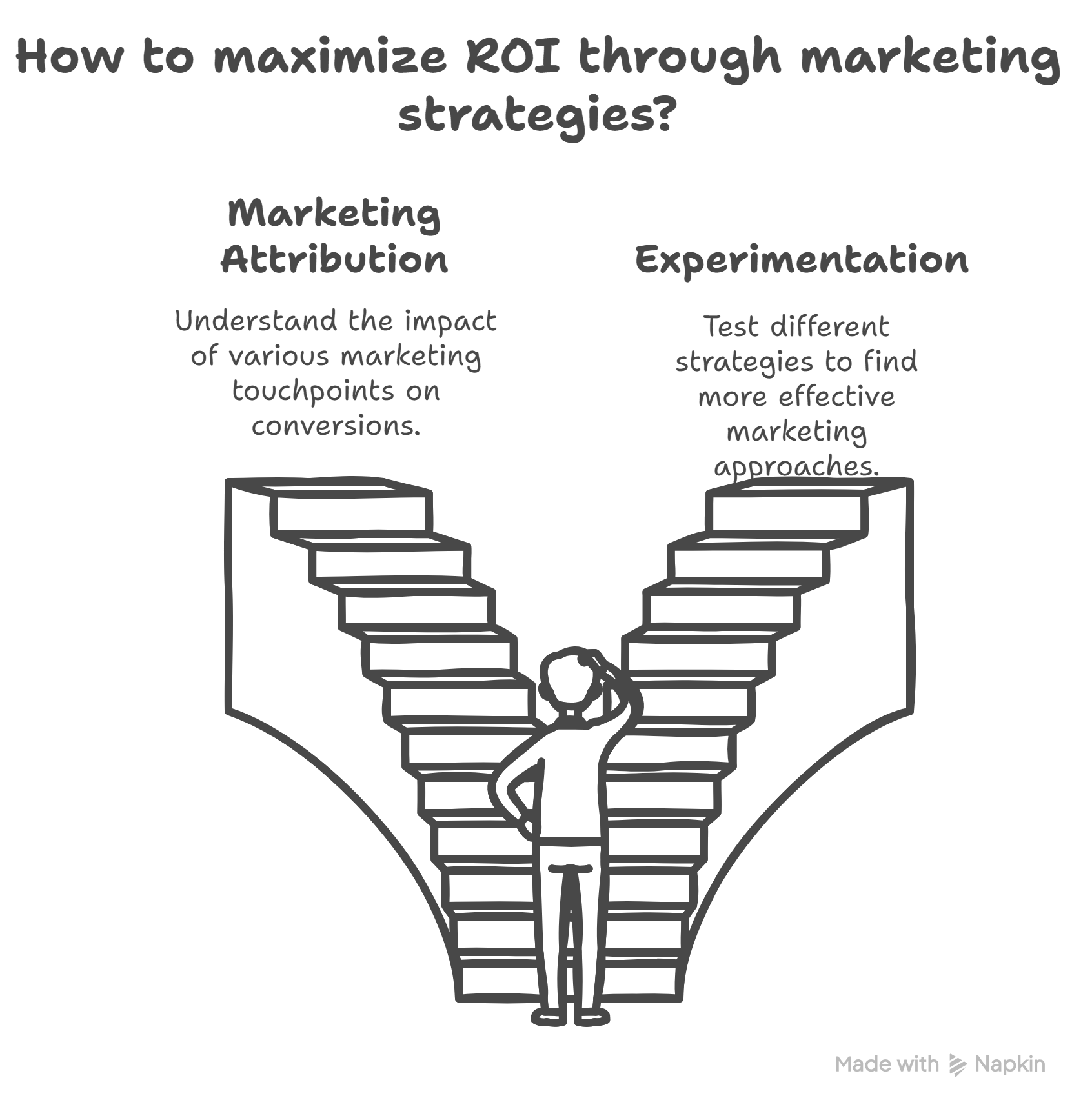Maximizing ROI with Marketing Attribution and Experimentation
Understanding which marketing efforts truly drive results and continuously testing new approaches are key to maximizing Return on Investment (ROI). Marketing Attribution and Experimentation are two critical components of this process, often enhanced by Marketing Automation (MA) and Artificial Intelligence (AI).
Marketing Attribution: Understanding What Worked
-
Definition: Marketing attribution is the science of assigning credit or value to the various marketing touchpoints a customer interacts with on their journey towards a specific outcome, typically a conversion (like a purchase or sign-up). It tries to answer the question: "Which marketing activities actually contributed to this success?"
-
Common Models (Ways to Assign Credit):
- First-Touch: Gives all credit to the very first interaction (e.g., the first ad someone clicked).
- Last-Touch: Gives all credit to the very last interaction before conversion (e.g., the final email click).
- Linear: Distributes credit evenly across all touchpoints.
- Time-Decay: Gives more credit to touchpoints closer to the conversion time.
- Position-Based (U-Shaped/W-Shaped): Gives more weight to specific key interactions like the first touch, lead creation touch, and last touch.
- Data-Driven: Uses algorithms (often AI-powered) to analyze all paths and assign credit based on the actual contribution of each touchpoint, specific to your business data.
-
Role of MA & AI:
- MA/CRM Systems: Essential for tracking and recording the different touchpoints (email opens, website visits, ad clicks, form fills) across the customer journey. Many platforms offer built-in attribution reporting based on simpler models (like first/last touch).
- AI: Enables more sophisticated, data-driven attribution models. AI can analyze complex, non-linear customer journeys and interactions to determine the probable influence of each touchpoint more accurately than predefined rule-based models.
-
Relatable Example: Imagine a customer journey:
- Sees a Facebook Ad (Touchpoint 1)
- Visits your Blog via Google Search (Touchpoint 2)
- Signs up for your Newsletter (Touchpoint 3)
- Clicks a link in an Email (Touchpoint 4)
- Makes a Purchase (Conversion)
- Last-Touch Attribution would give 100% credit to the Email (Touchpoint 4).
- First-Touch Attribution would give 100% credit to the Facebook Ad (Touchpoint 1).
- Linear Attribution would give 25% credit to each touchpoint.
- Data-Driven Attribution (AI) might analyze thousands of similar paths and determine, for instance, that the Newsletter Signup (Touchpoint 3) was the most influential step for this type of customer and assign it more weight.
Experimentation: Testing What Might Work Better
-
Definition: Experimentation in marketing involves actively testing different strategies, channels, messages, audience segments, or budget allocations to discover better ways to achieve goals. It goes beyond simple A/B tests of single elements (like a button color) to explore broader strategic hypotheses.
-
Role of MA & AI:
- MA: Facilitates experimentation by making it easier to segment audiences for targeted tests (e.g., showing one offer to Segment A and another offer to Segment B). It also helps automate the delivery and tracking of different experimental variations (e.g., different email nurture paths).
- AI: Can analyze performance data to identify areas with the highest potential for improvement, suggesting hypotheses for experiments. AI can also help predict the potential impact of different strategies and assist in optimizing budget allocation across various simultaneous experiments.
-
Relatable Example: Instead of just A/B testing the color of a "Sign Up" button, broader experimentation might involve:
- Testing two completely different offers (e.g., Offer A: 10% discount vs. Offer B: Free shipping).
- Testing the effectiveness of adding a new marketing channel (e.g., allocating budget to Pinterest ads vs. keeping all budget on Instagram).
- Testing different messaging themes for the same product (e.g., Theme A: focusing on durability vs. Theme B: focusing on style). MA helps target these different experiments to specific audience segments, while AI could analyze initial results to suggest which experiments show the most promise for scaling.
Goal: Maximizing ROI
By combining Marketing Attribution (to understand the value of past and current activities) with Experimentation (to systematically test and find better approaches for the future), businesses can:
- Identify underperforming channels or tactics and reallocate budget.
- Discover high-impact strategies and scale them.
- Continuously improve marketing effectiveness based on data.
- Make informed decisions to ensure marketing resources are used in the most profitable way, directly maximizing overall return on investment.


No Comments